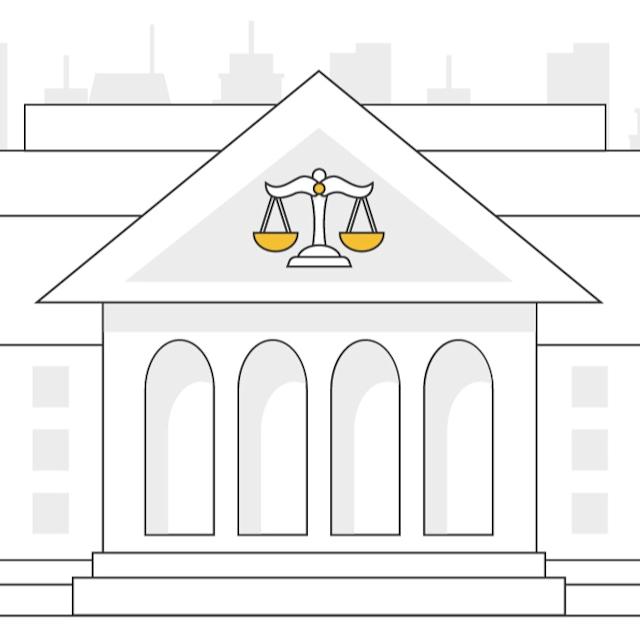Thinking of suing your client for chargeback fraud? Send a demand letter first. Use our free demand letter creator.
Start LetterContents
Chargebacks have become a nuisance for businesses rendering services or supplying customers with products online or in person. Consider this example, a client goes to a mechanic for an oil change, the mechanic then changes the oil and the client pays, but then the client asks their credit card to issue a chargeback. Most of the time businesses lose chargeback claims because credit card companies tend to side with their clients. What options are left for businesses dealing with chargeback fraud? The business can sue the person who issued the chargeback in small claims. Why? Because the business performed the service and they should get paid for their work.
In this article, we cover what chargebacks are, what friendly fraud is, how to fight chargeback fraud in small claims, and the chargeback process.
Did you know we have a free tool powered by AI that helps you create a demand letter to a customer that has filed a chargeback? Check out our demand letter tool.
What is a Chargeback
A chargeback is the return of money used to make a purchase, sometimes referred to as credit card disputed charges or a payment dispute. For example, a customer buys a new purse online and the online store charges their credit card. The customer waits the standard shipping time but the purse never arrives. Since the online store never gave the customer the purse they purchased they issue a chargeback to get their money back. Another reason a customer may issue a chargeback is if the customer does not recognize the purchase on their account.
How do chargebacks hurt businesses?
Chargebacks, directly and indirectly, hurt businesses. First of all, chargebacks come with fees. Secondly, banks and credit networks check a business’s chargeback ratio (the number of monthly chargebacks divided by total monthly transactions) and decide whether or not to work with a business based on this ratio.
So even if you own a business that successfully fights chargebacks you are still losing every time you have to pay chargeback fees and your chargeback ratio is still affected.
Is a chargeback illegal?
A chargeback is not illegal, however, fraud is and can occur if a customer abuses the chargeback process or engages in fraudulent behavior. If a customer is issuing chargebacks for items and services provided by a business then chargeback fraud has occurred.
Can a Customer Go to Jail for Disputing Charges?
Customers who initiate chargebacks based on false claims that a business did not deliver a product or render services are committing a form of fraud. Not only can chargeback fraud lead to lawsuits, but depending on the circumstances a customer who engages in chargeback-related fraud can face criminal charges and jail time. You may want to reach out to the district attorney’s office nearest to you or to where your client is located to see if they investigate chargeback fraud claims.
What is Friendly Fraud
Friendly fraud is often used interchangeably with chargeback fraud. However, sometimes you might see friendly fraud used to distinguish incidents where a customer issues a chargeback by mistake. For example, a customer initiates a chargeback because they did not recognize a transaction on their bank account statement.
Here are some examples of chargeback fraud:
A customer orders a laptop online and claims it never arrived. The customer initiates a chargeback with their bank. In reality, the laptop had arrived and the customer knew this when they initiated the chargeback.
A customer tells their credit card issuer that they returned a new oven they just purchased and initiates a chargeback because the business refuses to refund them for their return. In reality, the customer kept the oven and never asked the business for a refund.
A customer sees an unusual transaction in their credit card account and initiates a chargeback, in fact, the transaction was authorized by the customer but they did not recognize it.
How Does the Chargeback Process Work
The credit card chargeback dispute process is referred to as representment. Once your customer or client initiates the chargeback process with their bank (referred to as the issuing bank) your business will receive an initial chargeback notice.
This notice includes a reason code used to classify the type of chargeback your customer has initiated. This reason code corresponds with the reason that the customer is requesting a chargeback. For example, the chargeback reason code could say that items were never delivered to the customer.
After a customer initiates a chargeback, you as the business owner decide whether or not to dispute the chargeback. If you do decide to dispute the case because you believe some type of chargeback fraud has occurred you must prove this. If you take no action your customer will win the chargeback by default.
How Does a Business Fight a Chargeback?
As part of the representment process, businesses can fight chargebacks by submitting a rebuttal letter. A rebuttal letter is a letter that clearly and concisely summarizes why the customer’s credit card dispute should be denied. The letter doesn’t have to be long, but it should explain why the customer’s claims are either wrong or fabricated. After the rebuttal letter has been sent the customer’s bank (the issuing bank) will review the case and make a decision.
What is compelling evidence?
In the representment process, compelling evidence refers to all evidence a business includes with its rebuttal letter. Compelling evidence can include delivery confirmation, purchase order information, and generally all records of the disputed transaction.
Below is a sample checklist of potential evidence to help you fight chargebacks. However, no two banks are the same so check any chargeback guidelines the issuing bank may have:
Shipping and delivery confirmation. These tend to be really important when showing that the goods were delivered—for example, USPS tracking numbers, FedEx tracking, or UPS.
Correspondences between yourself and your customer or client.
A transaction receipt or the order invoice specifying what product was sold or what services were provided.
Any checkout information such as receipts or order confirmations.
AVS (address verification system) and CVV (card verification value) match.
Your website's terms and conditions; the specific sections that pertain to the chargeback dispute. Highlight selected passages if need be.
Timeframe for fighting a credit card chargeback
Each bank has different chargeback dispute rules and timeframes, but typically the timeframe may be 20 to 45 days after the business is notified. The entire chargeback process can take up to 120 days or more.
The arbitration process for chargebacks
In some cases, the customer or the business may seek arbitration because they were not happy with the outcome of the chargeback or a decision could not be made.
Arbitration is a form of dispute resolution and involves a neutral third party making a decision, like a judge. In the case of chargebacks, the card network (Visa, Mastercard, etc.) for the customer will step in as arbitrator and make the final decision.
If you lose a chargeback dispute at arbitration can you sue in small claims court? Most card networks do not provide appeals after a losing arbitration award. However, suing in small claims court is still an option.
Chargeback Process Chart
Below is a chart that visually illustrates the chargeback process. Please note that this is a general chargeback process and depending on the card network your customer uses to handle their chargeback this process is subject to change.

Suing a Customer in Small Claims Court After a Chargeback
What options do you have after losing a chargeback dispute? You can consider suing your client in small claims court.
What to do before suing in small claims for a chargeback?
Send your client a demand letter. A demand letter outlines to your customer that you would like them to reimburse you for the chargeback, otherwise, you intend to escalate the problem to a lawsuit. Most businesses send a demand letter before suing as it is an affordable way to resolve the problem.
Did you know we have a free tool powered by AI that helps you create a demand letter to a customer? Check out our demand letter tool.
Here is a video on how our demand letter tool works:
How much can you sue for in small claims?
Each state has a different limit on how much you can sue for in small claims. Most of the time the limit varies between $3,000 - $25,000. For example, in California small claims, you can sue a customer for up to $12,500 while in New York small claims, the limit varies from county to county and can be between $3,000- $10,000.
In general, if your customer owes you more than the amount you can sue for, you can still sue for the maximum amount allowed, but you will need to waive any additional amount over the limit.
How much does it cost to take a customer to small claims court?
The amount you will pay to file a small claims lawsuit against your customer for money owed varies from state to state but generally is between $15- $75. If you cannot afford to pay court fees, you can ask the court if they have waivers for court fees.
You may also need to pay to notify your customer you are suing after you file suit. This is called “serving” and ranges from $0- $125. The rules around serving are very specific in each state so make sure to review them.
What is a small claims court hearing like?
Small claims hearings are meant to be quick and informal. Here is what you can expect when you sue a customer in small claims court:
Right before the hearing, the judge will ask you and your customer to show each other the evidence you both have brought to the hearing. Consider using some of the same documents you used in the chargeback process.
The Judge will ask why you are suing your customer in small claims court. This is when you will tell the judge that your client issued a chargeback when they shouldn’t have. The judge will then turn to your customer and ask them to state their side of the story.
The hearing could last around 15 minutes but every case is different and this depends on many factors.
Very rarely will a judge tell you in court their decision immediately after the hearing. Instead, the judge will probably tell you and your customer that the decision will be mailed to you both (which usually takes a few weeks).
How do I prepare for the small claims hearing?
To prepare for your small claims court hearing:
Research the law. If you are unsure about any of the claims you want to make in court consider consulting with an attorney.
Prepare what to say. During the hearing, the judge will ask you and your client questions about the case. Be prepared to discuss the chargeback dispute, how much money your customer owes you, and why you think your customer owes you that amount.
Prepare your evidence. You want to have your evidence organized with titles, dates, and why that piece of evidence is important. Include the compelling evidence you used during the chargeback process. For example, delivery information (including tracking), a transaction receipt, or an order invoice specifying which product you sold.

Camila Lopez
Legal Educator at JusticeDirect. Camila holds a law degree and is a certified mediator. Her passion is breaking down complicated legal processes so that people without an attorney can get justice.
